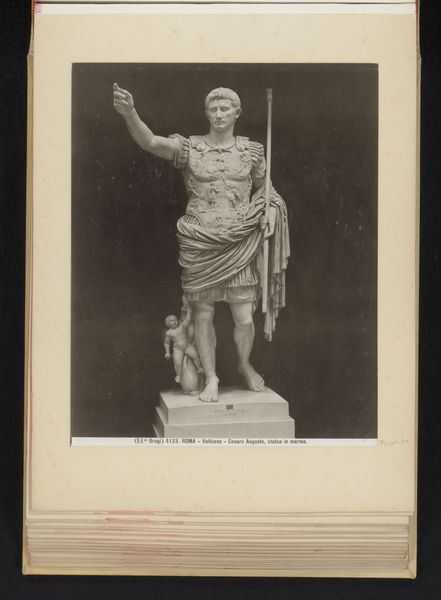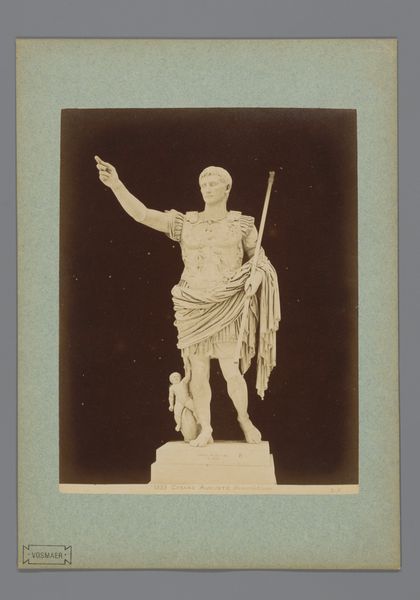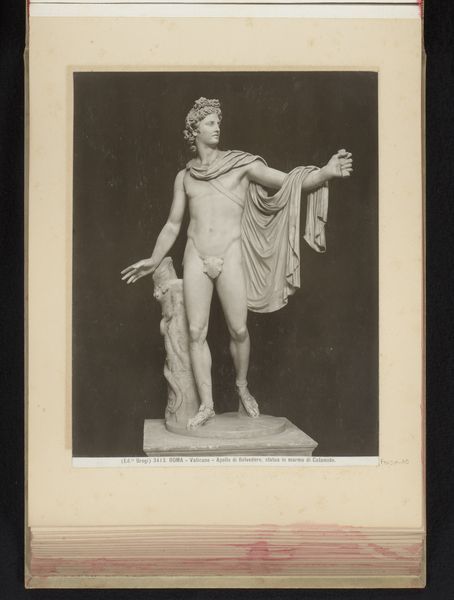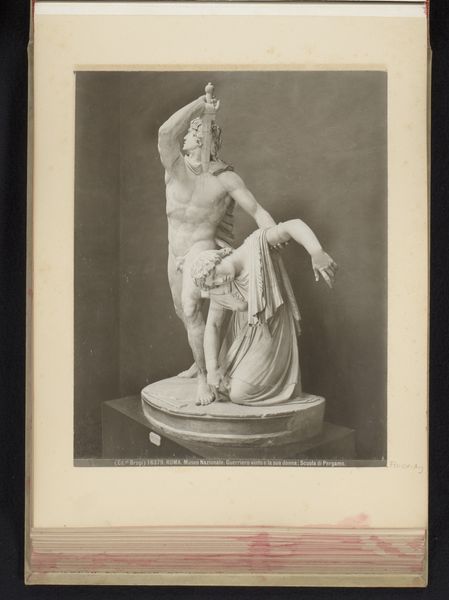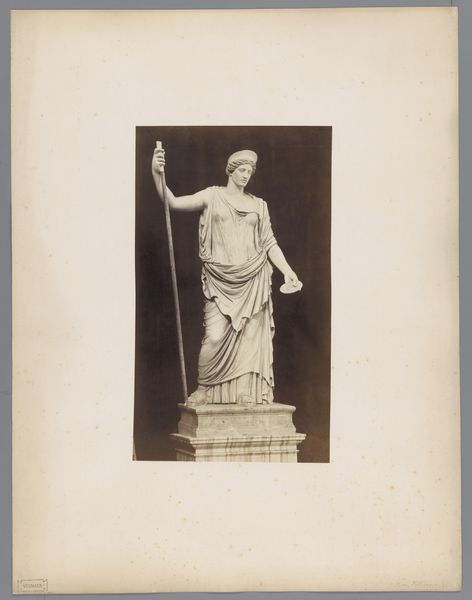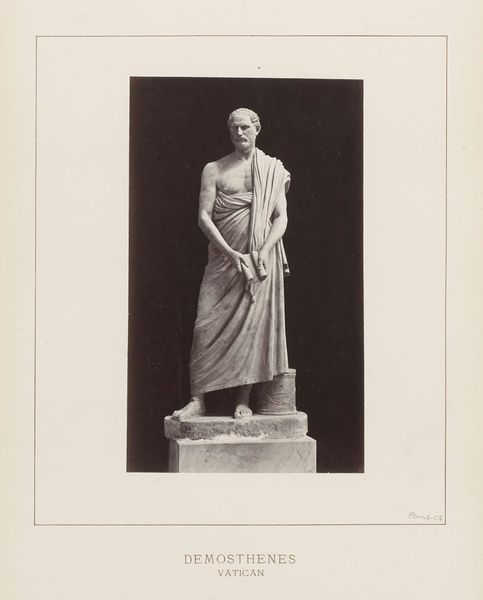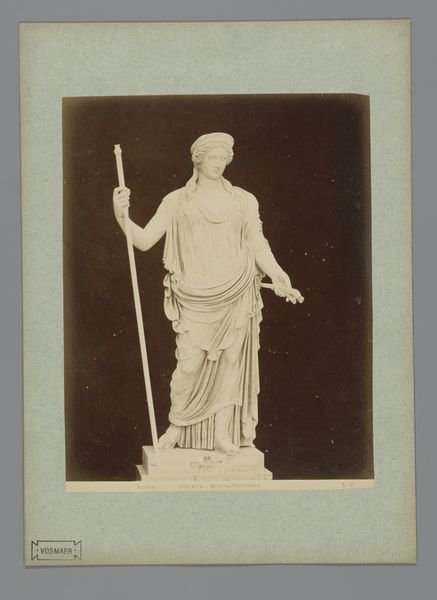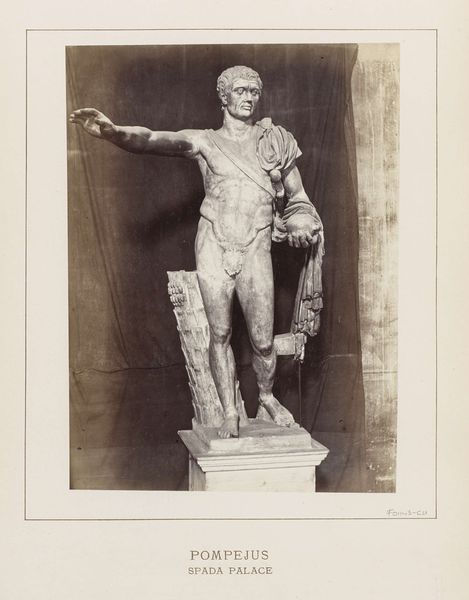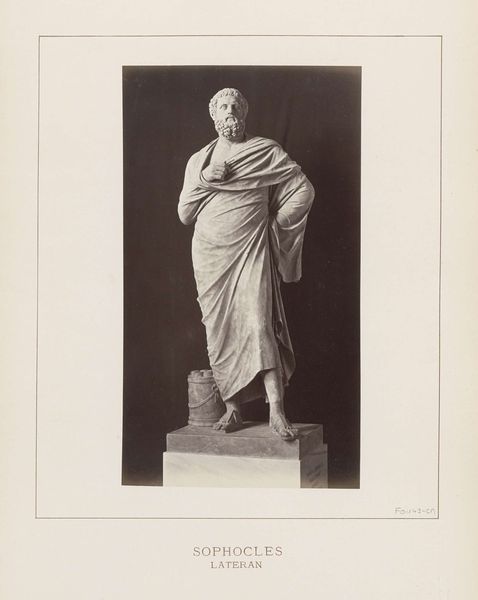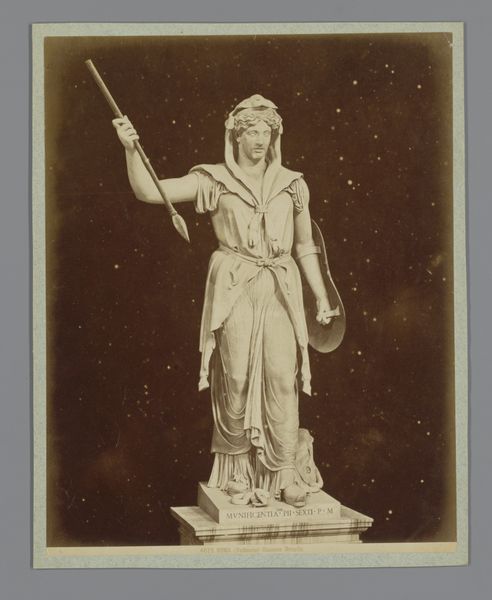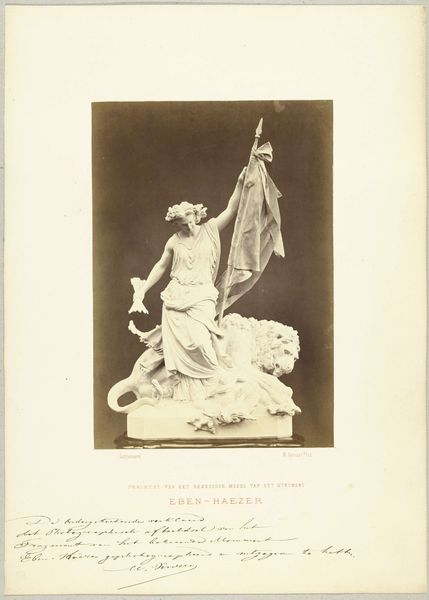
Sculptuur van Augustus van Prima Porta in de Vaticaanse Musea te Rome, Italië 1870 - 1881
0:00
0:00
print, bronze, photography, sculpture, gelatin-silver-print
#
portrait
#
statue
# print
#
sculpture
#
greek-and-roman-art
#
classical-realism
#
bronze
#
figuration
#
photography
#
classicism
#
ancient-mediterranean
#
sculpture
#
gelatin-silver-print
#
history-painting
#
academic-art
#
realism
#
statue
Dimensions: height 244 mm, width 198 mm
Copyright: Rijks Museum: Open Domain
Curator: The sheer artistry and subtle propagandistic undertones of classical sculpture never fail to intrigue me. Editor: It's striking, isn’t it? At first glance, this image radiates authority. The confident stance, the raised hand, even the texture of the drapery speak to power. Curator: Indeed. This photograph, taken by Giacomo Brogi between 1870 and 1881, depicts the sculpture of Augustus of Prima Porta located in the Vatican Museums in Rome. It encapsulates more than just aesthetic values; it embodies political strategy. Editor: Tell me more about the symbols. I am immediately drawn to the Cupid figure near his feet, which almost appears as a footnote in this majestic depiction of an emperor. Curator: The statue employs powerful visual symbolism to reinforce Augustus's authority. Cupid is present as a symbol of Augustus's claim to divine lineage through Julius Caesar, linking him to Venus, the goddess of love, hence Cupid’s presence. Editor: And what about the breastplate? It is decorated with very intricate carvings and illustrations. Curator: Exactly. That's where much of the political messaging occurs. The breastplate depicts the return of the Roman standards by the Parthians, a significant diplomatic victory for Augustus, subtly glorifying his reign and military prowess. It's crucial to see how such art shaped public opinion. Editor: The way Augustus holds his staff contributes, too. He looks powerful and determined, but still composed. Curator: It represents leadership and justice, two values he wanted the Roman citizens to associate with him. This sculpture became a template, repeated endlessly to create a sense of stability. Editor: This was meant to unite or impress. The intent behind it is clear. The scale, although captured in a photograph, has an almost intimidating air about it. Curator: Precisely. And that's what’s remarkable about this gelatin silver print – it captures not just the statue’s form but its cultural weight. Brogi’s photographic interpretation becomes a study of power itself. Editor: It seems the potency of symbols lasts over the course of history; that artwork keeps instigating these conversations, even through photographs. Curator: Yes, it prompts a valuable conversation about art's function within societal constructs and its perpetuation via photographic representation.
Comments
No comments
Be the first to comment and join the conversation on the ultimate creative platform.
